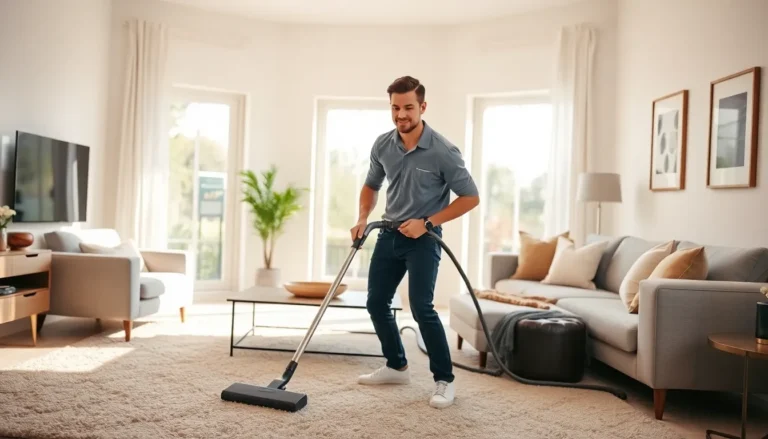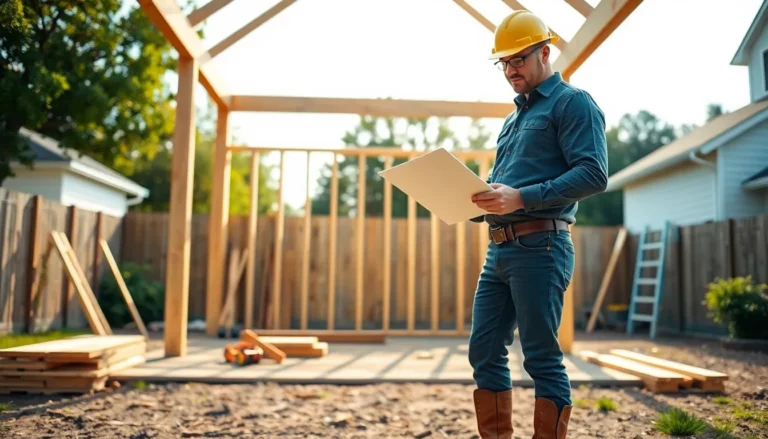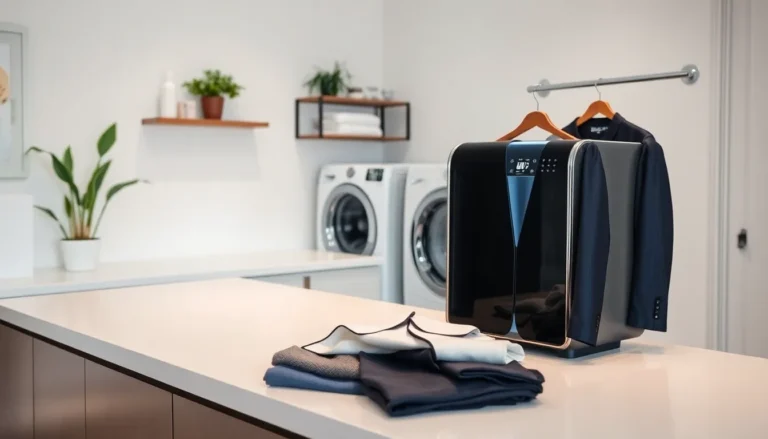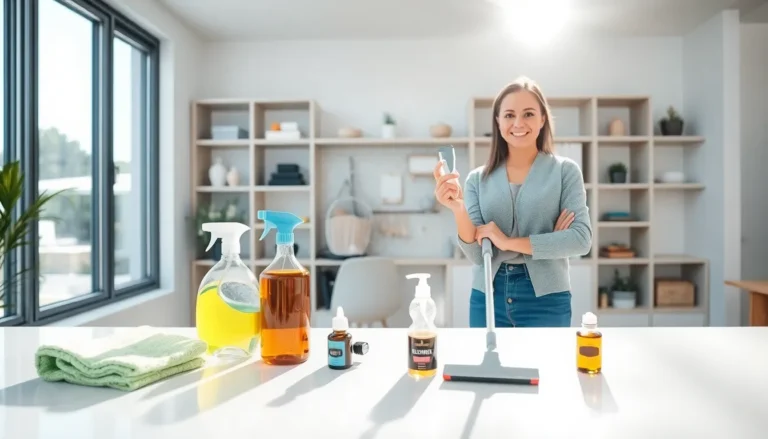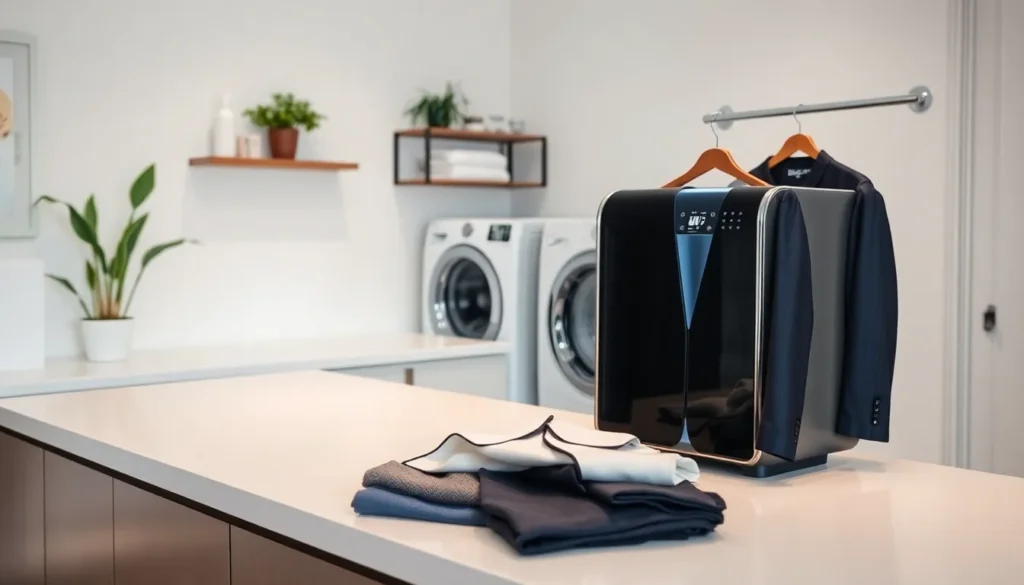Table of Contents
ToggleLet’s face it, nobody loves laundry day. But what if you could skip the trip to the dry cleaner and handle it right at home? Enter the home dry cleaning machine. Imagine being your own laundry hero, wearing a cape made of freshly cleaned clothes while saving time, money, and maybe a few embarrassing wardrobe malfunctions. It sounds like a dream, right? This article dives into the ins and outs of home dry cleaning machines, perfect for those who want to elevate their laundry game with a splash of convenience and a dash of humor.
Understanding Home Dry Cleaning Machines
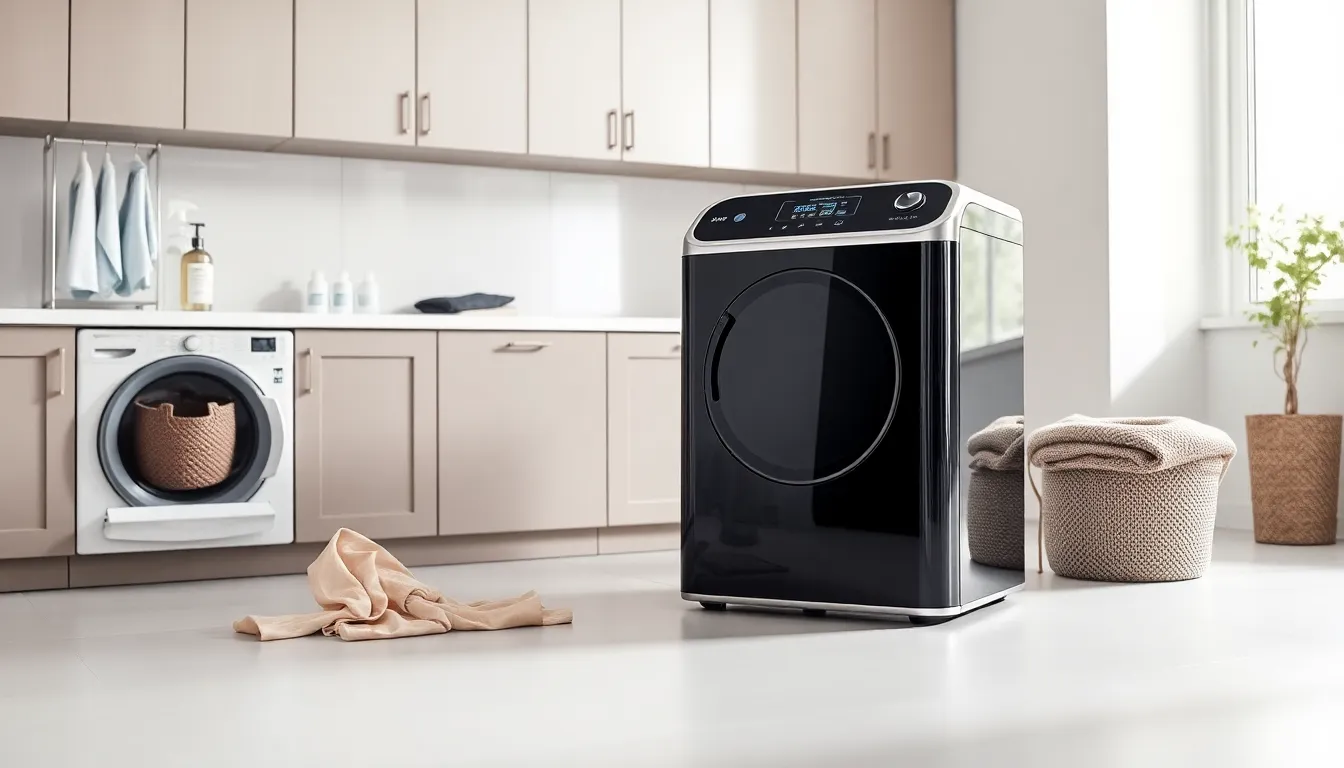
Home dry cleaning machines are compact devices designed for tackling delicate fabrics that require special care, just like your favorite silk shirt. These machines often use a method known as ‘near dry cleaning’ which involves minimal amounts of water, ideally less than a traditional washer. Instead of soaking your clothes, they use solvent cleaning methods to lift stains and odors, which means your clothes come out fresh without losing that pristine finish.
Also noteworthy is the range of features packed into these machines. From steam settings to various fabric cycles, each unit is aimed at making the home cleaning process as simple as pressing a button. Understanding the specifications is key to finding the right one that suits your household needs.
Benefits of Using a Home Dry Cleaning Machine
The advantages of owning a home dry cleaning machine are numerous and compelling. First off, convenience reigns supreme. No longer will you be tied to the dry cleaner’s hours, scrambling to pick up clothes before they close. Instead, you can toss in a load anytime, whether it’s during a TV binge-watch session or while cooking dinner.
Equally important is the cost-effectiveness. Regularly visiting a dry cleaner can put a dent in anyone’s wallet. Over time, the expense of purchasing your machine pays for itself, essentially transforming your laundry process into a budget-friendly try. Plus, saving time means you have more moments to relax or indulge in hobbies you enjoy.
Let’s not forget about fabric care. With a home dry cleaning machine, owners can meticulously control the settings, ensuring garments remain in tip-top shape. No more worrying about accidental shrinkage or fading colors. In short, it’s like giving your clothes a spa treatment right in your laundry room.
How to Choose the Right Dry Cleaning Machine
Selecting the ideal home dry cleaning machine may seem daunting, but it doesn’t have to be. Start by assessing the type of fabrics you typically wear. For instance, if your closet is brimming with delicate silk blouses or designer suits, choose a machine that specializes in these materials.
Next, consider machine capacity. A smaller unit may suffice for an individual, but families might want to invest in a larger model to handle multiple garments at once. Also, pay attention to the machine’s features. Look for options that offer different fabric cycles, easy-to-use controls, and perhaps even smart technology that allows for remote operation.
Finally, don’t forget about customer reviews and warranties. Reading through feedback can provide valuable insights on durability and performance. A good warranty can save a lot of headaches down the road.
Step-by-Step Guide to Using a Home Dry Cleaning Machine
Using a home dry cleaning machine is a breeze, especially once you get the hang of it. Here’s a step-by-step guide to ensure everything goes smoothly:
- Read the Labels: Always check the care labels on your garments before cleaning. Not all fabrics respond well to dry cleaning.
- Prepare Your Clothes: Empty pockets, close zippers, and turn clothes inside out to protect their surface.
- Load the Machine: Place your garments evenly in the machine, taking care not to overcrowd it.
- Add Cleaning Solution: Pour in the appropriate amount of dry cleaning solvent or solution specific to your machine.
- Select the Cycle: Choose the right cycle based on fabric type, delicates, regular, or heavy-duty.
- Start the Machine: Push that button and let the machine do its magic.
- Finishing Up: After the cycle ends, remove your clothes promptly, hang them up or lay them flat to avoid creasing.
It’s as simple as that. To make it even easier, consider letting the kids handle the laundry while you relax.
Maintaining Your Dry Cleaning Machine
Like any appliance, maintaining a dry cleaning machine ensures it runs smoothly and lasts longer. Regular maintenance isn’t just good practice: it’s essential for optimal performance. Here’s what to do:
- Clean the Filters: Most machines come with filters that should be cleaned regularly to avoid clogs.
- Empty the Water Reservoir: If your machine has a reservoir, empty and rinse it out after every use.
- Wipe Down Surfaces: Use a soft cloth to clean the machine’s exterior and interior drapes after use. Dust and debris can accumulate and negatively impact functionality.
- Check the Seals and Hoses: Occasionally inspect seals for wear and tear and replace them if necessary to maintain efficiency.
By dedicating some time each month to clean and inspect your machine, you not only prolong its life but also keep your clothes looking fresh.
Common Issues and Troubleshooting Tips
It’s normal to face a few hiccups when using any technology, including home dry cleaning machines. Here are some common issues along with handy troubleshooting tips:
- Stains Not Coming Out: If stains persist after cleaning, make sure you have pre-treated them appropriately before the cycle. For tough stains, consider re-treating and running a second cycle.
- Foul Odor After Cleaning: If garments have an unpleasant smell post-cleaning, check the cleaning solution and ensure you’re using the right one. Sometimes residual odor can also come from a dirty machine.
- Machine Not Starting: Ensure it is plugged in, and double-check the settings. If it still won’t start, consult the user manual for specific reset instructions.
- Leaks: Any leaking should be addressed immediately. Check hoses and connections for tightness and replace if needed.


